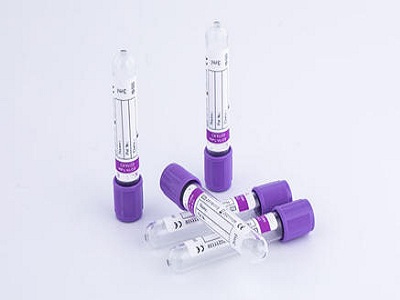Classification and description of blood collection tubes
1. Biochemical
Biochemical blood collection tubes are divided into additive-free tubes (red cap), coagulation-promoting tubes (orange-red cap), and separation rubber tubes (yellow cap).
The inner wall of the high-quality additive-free blood collection tube is evenly coated with inner wall treatment agent and tube mouth treatment agent to avoid cell breakage during centrifugation and affect the test results, and the inner wall of the tube and serum are clear and transparent, and there is no blood hanging on the tube mouth.
In addition to the inner wall of the coagulation tube being uniformly coated with the inner wall treatment agent and the nozzle treatment agent, the spray method is adopted in the tube to make the coagulation accelerator evenly attached to the tube wall, which is convenient for quickly and fully mixing the blood sample after sampling, which can greatly shorten the coagulation time. And there is no precipitation of fibrin filaments to avoid blocking the pinhole of the equipment during sampling.
When the separation rubber tube is centrifuged, the separation gel is moved to the center of the tube, which is between the serum or plasma and the blood formed components. After the centrifugation is completed, it solidifies to form a barrier, which completely separates the serum or plasma from the cells and ensures the stability of the serum chemical composition. , no significant change was observed under refrigeration for 48 h.
The inert separation rubber tube is filled with heparin, which can achieve the purpose of rapid separation of plasma, and the sample can be stored for a long time. The separation hoses described above can be used for rapid biochemical assays. Separation gel heparin tubes are suitable for biochemical testing in emergency, acute intensive care unit (ICU), etc. Compared with the serum tube, the biggest advantage is that the serum (plasma) can be separated quickly, and the second is that the chemical composition of the serum (plasma) can be stable for a long time, which is convenient for transportation.

2. Anticoagulant
1) Heparin tube (green cap): Heparin is an excellent anticoagulant, which has little interference with blood components, does not affect the volume of red blood cells, and does not cause hemolysis. Volume, erythrocyte sedimentation rate and general biochemical determination.
2) Blood routine tube (purple cap): EDTA is chelated with calcium ions in the blood, so that the blood does not coagulate. Generally, 1.0~2.0 mg can prevent 1 ml of blood from coagulating. This anticoagulant does not affect the count and size of white blood cells, has minimal effect on the morphology of red blood cells, and can inhibit the aggregation of platelets, so it is suitable for general hematological tests. Usually, the method of spraying is adopted to make the reagent evenly adhere to the tube wall, so that the blood sample can be quickly and fully mixed after sampling.
3) Blood coagulation tube (blue cap): quantitative liquid sodium citrate anticoagulant buffer is added to the blood collection tube. Anticoagulant and the rated blood collection volume are added in a ratio of 1:9 for the examination of coagulation mechanism items (such as PT, APTT). The principle of anticoagulation is to combine with calcium to form a soluble calcium chelate so that the blood does not coagulate. The recommended anticoagulant concentration required for hemagglutination assays is 3.2% or 3.8%, which is equivalent to 0.109 or 0.129 mol/L. For the blood coagulation test, if the blood ratio is too low, the APTT time will be prolonged, and the prothrombin time (PT) results will also be significantly changed. Therefore, whether the ratio of anticoagulant to the rated blood collection volume is accurate or not depends on this type of product. important standard of quality.
4) ESR tube (black cap): The anticoagulation system of the blood collection tube is the same as that of the blood coagulation tube, except that sodium citrate anticoagulant and the rated blood collection volume are added in a ratio of 1:4 for ESR examination.
5) Blood glucose tube (grey): Fluoride is added to the blood collection tube as an inhibitor. Due to the addition of the inhibitor and the special treatment of the inner wall of the test tube, the original properties of the blood sample are maintained for a long time, and the metabolism of blood cells is basically stagnant. It is widely used in the examination of blood glucose, glucose tolerance, erythrocyte electrophoresis, anti-alkali hemoglobin, and glucose hemolysis.
Post time: Mar-09-2022





